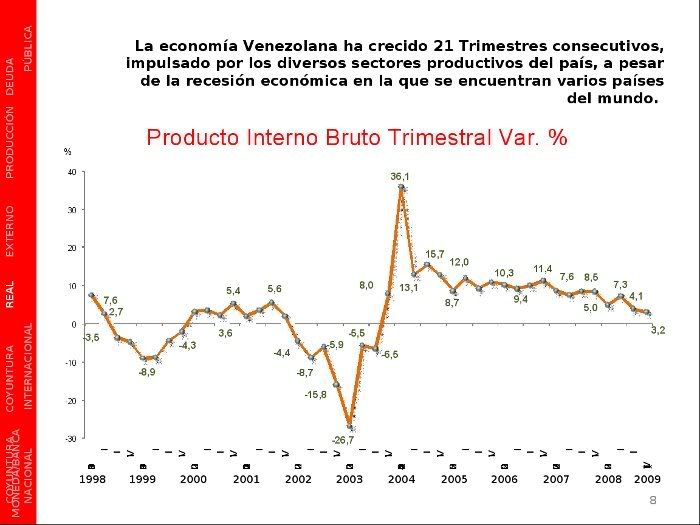The Venezuelan minimum wage, including the value of food vouchers, will reach $636 in September this year, when the process of raising it by 20% gets completed; the second highest minimum wage in South America is Argentina’s $310 per month.
The anti-crisis measures announced by the Bolivarian government last Saturday, although affecting Venezuelans negatively to some extent, will keep Venezuela above the level of the other Latin American countries that are also affected by the global capitalist crisis.
The Ministry of Communication and Information sent us the following graphics, based on data from the Central Bank of Venezuela, the Ministry of Economy and Finance, the National Institute of Statistics, and other sources, showing that the minimum wage in Venezuela continues to be the highest in Latin America and, counting the value of food vouchers, it is double the second highest minimum wage.
See the charts below.
Legal Minimum Income (Minimum Wage + Food Vouchers) in Venezuela, 1988-2009
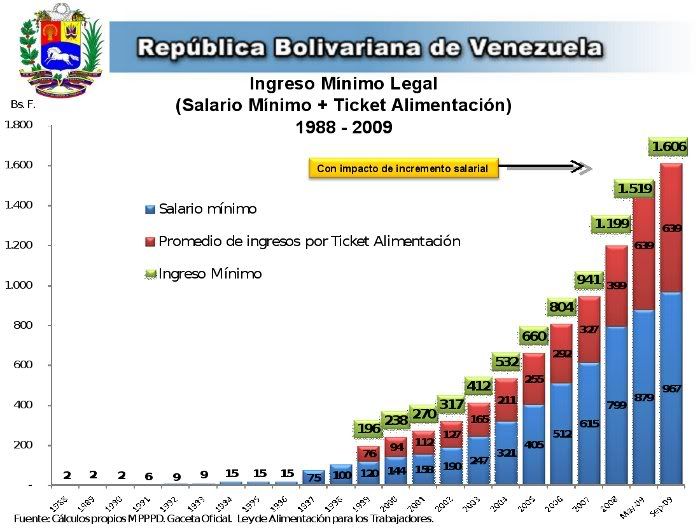
Above: Historical Evolution of Venezuela’s Minimum Wage from 1988 to September 2009. The blue bar represents the base wage, and the red bar food vouchers. The wage, including food vouchers, will surpass 1,606 strong bolivars per month from September this year, compared with the minimum wage + cestatickets (food subsidy) in 1999, which was 196 real bolivars. (Note: all figures are in real/strong bolivars.)
Below: The Evolution and Growth of the Venezuelan Minimum Wage in US Dollars from 1989 to September 2009, excluding food vouchers. It will end up $450 a month.
Venezuelan Minimum Wage in US Dollars, 1988-2009
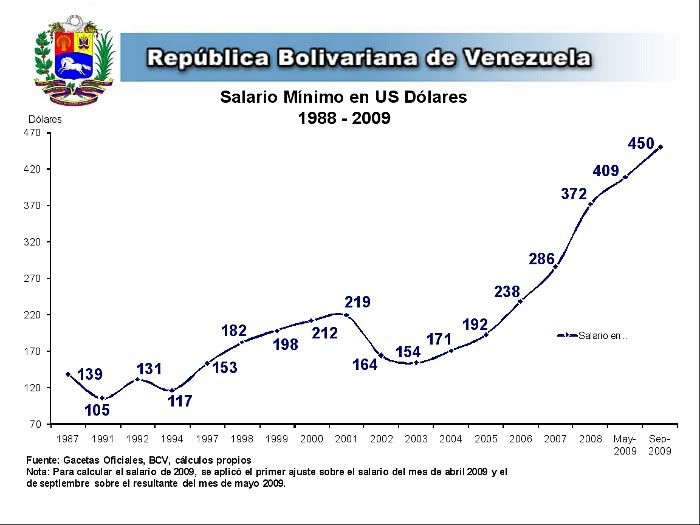
Monthly Minimum Wage in Latin America, 2009, in US Dollars
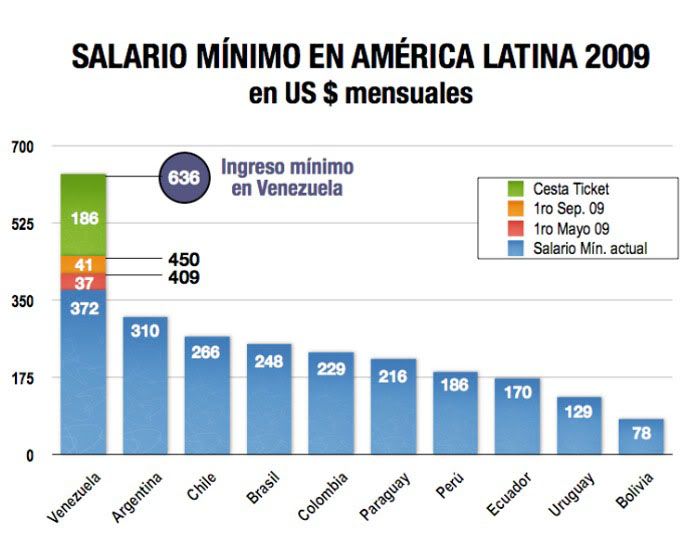
Above: The minimum wage, including food vouchers, will be worth $636 from September this year, continuing to be the highest in Latin America and twice that in Argentina, the country that remains in second place. Even without counting the food vouchers, it is still the highest in South America.
Now, let’s look at some social and economic indicators of Venezuela and compare them with those of the United States and other Latin American countries. The indicators of poverty and extreme poverty in Venezuela, after a spike in 2002 and 2003, have continued to decline.
Social and Economic Indicators of Venezuela
Measure of Poverty
Percentage of Poor Individuals by Income Line, Second Semesters 1997-2008
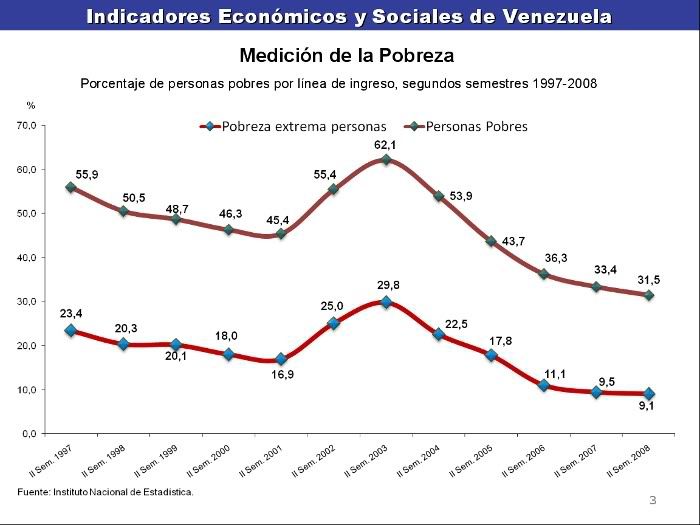
The number of households in extreme poverty declined by 58.6% between 1999 and 2008. The Millennium Development Goal was reached in the first semester of 2006, which saw extreme poverty decline to 12.5%.
Percentage of Individuals in Extreme Poverty, by Semester for Years 1990-2008
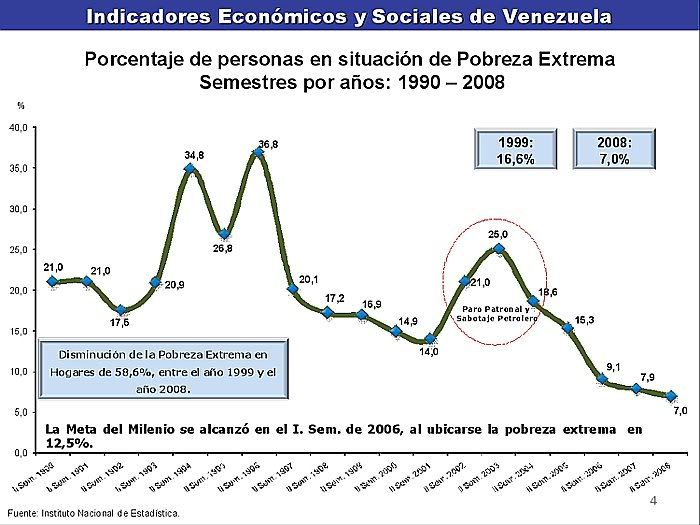
The Venezuelan economy has grown for 21 consecutive quarters, pushed by diverse productive sectors of the country, despite the economic recession facing a number of countries in the world.
Similarly, the number of unemployed individuals in the largest economy of the world has also kept its growth trend, reaching 8.1% of the economically active population in the month of February, the highest figure in the last 25 years. A report by the US Department of Labor indicates that the US economy is in worse shape than previously estimated and that it is possible that more federal measures are required to confront what may become the worst recession since the Second World War.
Unemployment Rate in the United States
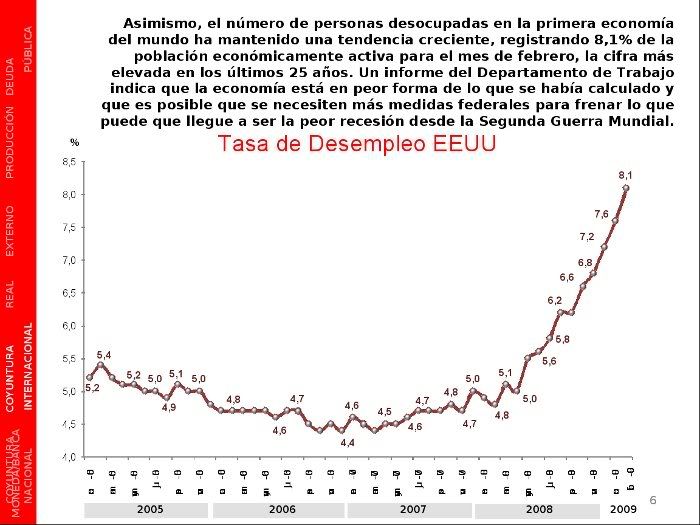
The February 2009 unemployment rate in Venezuela was 7.40%, maintaining its tendency to decrease, compared to the figure reached — 7.60% — in the same month last year.
Monthly Unemployment in Venezuela
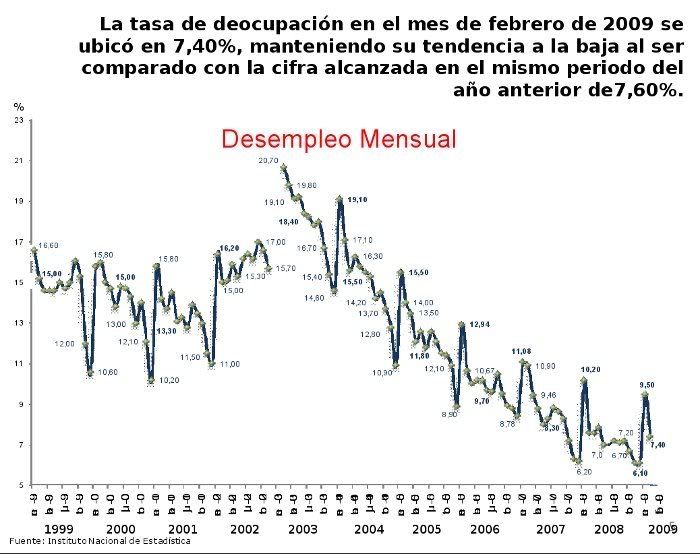
Major Latin American economies are beginning to show strong signs of escalation of unemployment rates, except the Venezuelan economy, whose unemployment rates for the months of January and February this year, despite being the third highest in the region, were among the lowest in its own history.
January Unemployment Rates in Latin America
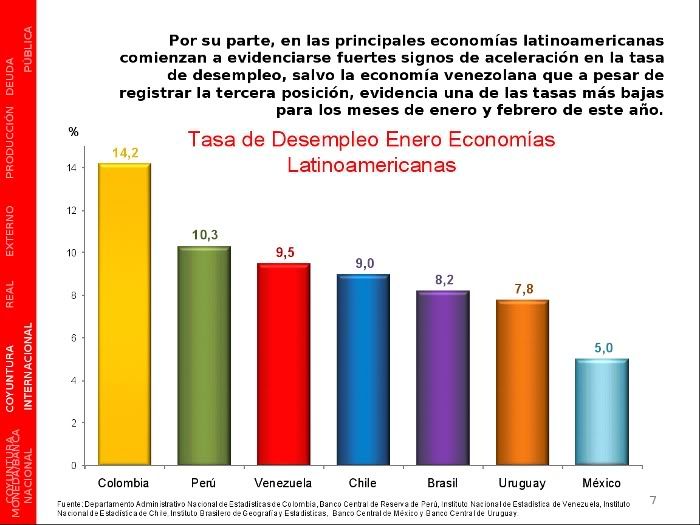
This article was published by YVKE Mundial on 25 March 2009. Translation by Yoshie Furuhashi.

